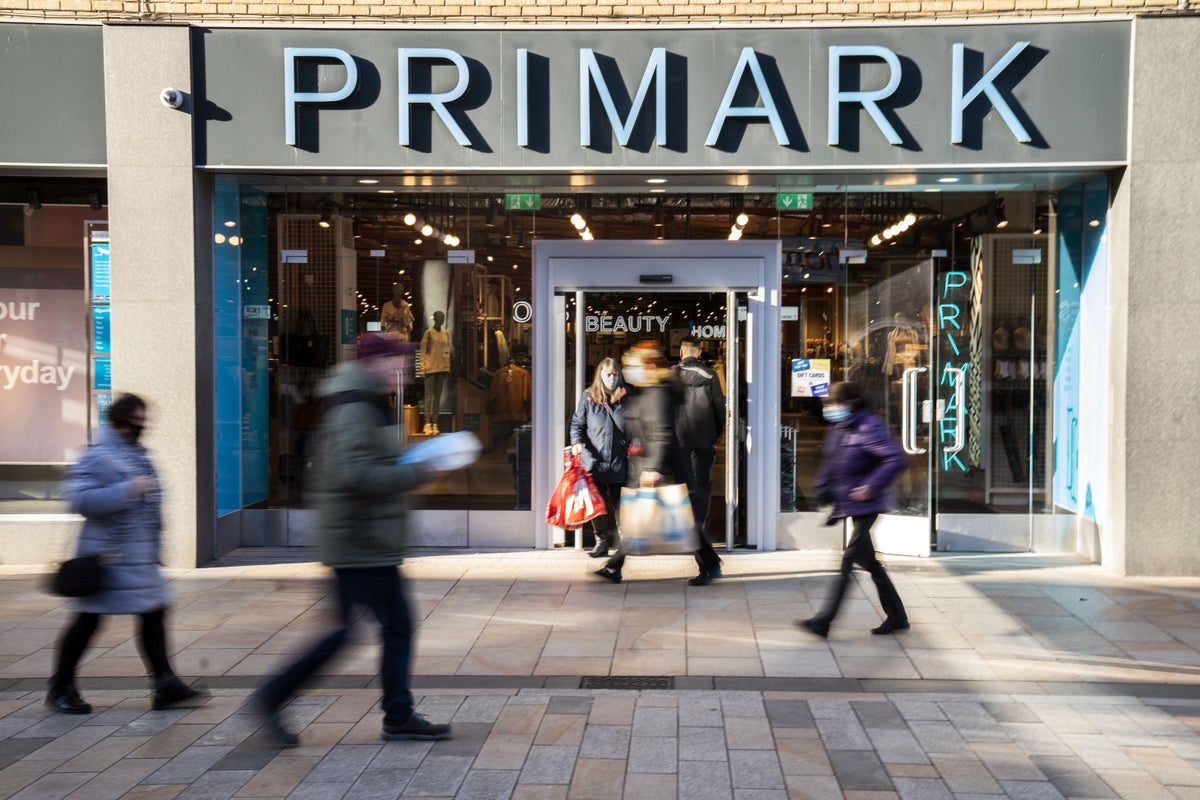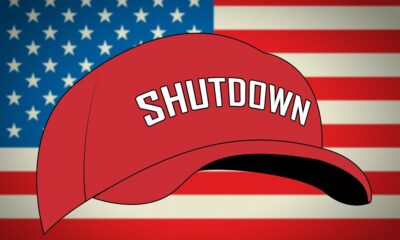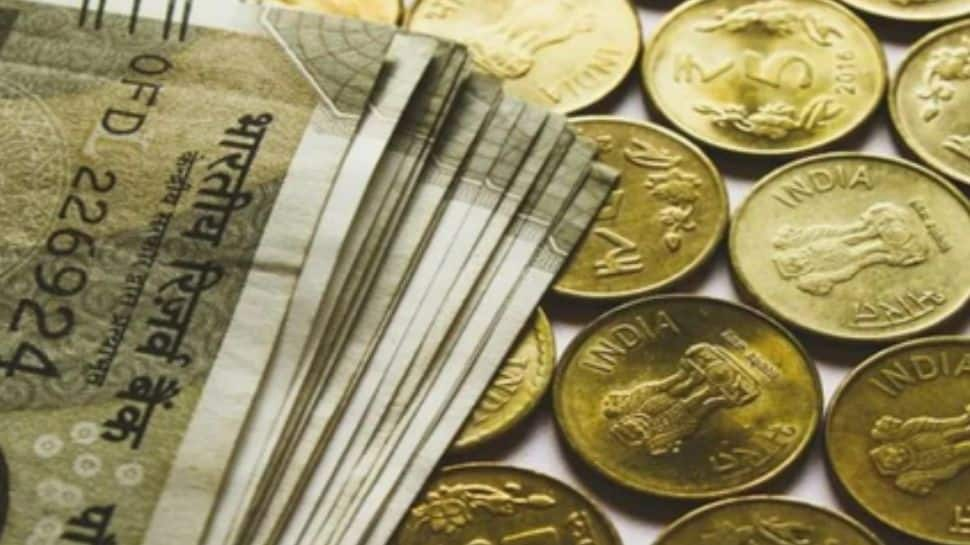Business
Consumer caution ahead of Budget drives drop in footfall – BRC

Low consumer confidence ahead of a potential tax-rising Budget kept many shoppers away from retail locations in September, according to latest figures.
Tube strikes in London, heavy rainfall in the first half of September and Storm Amy towards the end of the month exacerbated the decline, the British Retail Consortium (BRC) said.
Total UK footfall was down by 1.8% in September on a year ago, significantly more than the 0.4% decline registered in August, BRC-Sensormatic data shows.
High street footfall decreased by 2.5% year on year in September while visits to retail parks and shopping centres were down 0.8% and 2% respectively.
Footfall fell year on year across all nations again, down 0.5% in Northern Ireland, 1.8% in England, 2.3% in Scotland and the largest decrease of 2.5% in Wales.
BRC chief executive Helen Dickinson said: “Retailers’ ability to invest in local communities and high streets has been hampered by last year’s budget, which added £5 billion in employment costs to the industry, in addition to a new packaging tax.
“For retailers to invest in shopping destinations that will entice shoppers back, the Government-imposed cost burdens holding back that investment must be lifted.
“The upcoming Budget is the moment for the Chancellor to do just that, deliver the Labour manifesto commitment of a meaningful reduction in business rates for the industry and ensure no shop pays more in the process.”
Andy Sumpter, from Sensormatic, said: “The month began with a modest uplift, driven by back-to-school shopping, but momentum was quickly disrupted.
“London’s Tube strikes mid-month and Storm Amy at the end brought widespread disruption, impacting shopper activity nationwide.
“These events compounded an already cautious consumer mood, with many still navigating cost pressures and economic uncertainty.
“Retailers will now be hoping that September’s slowdown was less a sign of retreat and more a pause for thought.”
Business
Top PSU bank roles open to private sector: SBI MD, ED positions to welcome external candidates; eligibility criteria changed – The Times of India

The government has opened senior management positions in public sector banks, including State Bank of India (SBI), to private sector professionals, a move aimed at broadening the talent pool for top banking leadership.Under the revised appointment guidelines, one of the four Managing Director (MD) posts at SBI is now accessible to private sector candidates and individuals from other public sector financial institutions, PTI reported. Previously, all MD and chairman positions were filled internally.The new guidelines also allow private sector professionals to apply for Executive Director (ED) positions across public sector banks (PSBs). In addition to SBI, the 11 other nationalised banks—including Punjab National Bank, Bank of Baroda, Canara Bank, Union Bank of India, and Bank of India—are covered under the framework.Private sector candidates for the MD post must have a minimum of 21 years of professional experience, including at least 15 years in banking and two years at the bank board level. For ED roles, candidates need at least 18 years of experience, with 12 years in banking and three years at the highest level below the board. Eligibility for public sector candidates remains unchanged.According to the guidelines issued by the Appointments Committee of the Cabinet, the first vacancy of SBI’s MD will be treated as open to all eligible candidates, while subsequent vacancies will be filled by internal PSB candidates. For ED positions, one post per bank will be accessible to both private sector and internal candidates.However, officers holding the post of Chief Vigilance Officer (CVO) are ineligible for these appointments. The eligibility rules for nationalised banks also specify service requirements at the Chief General Manager and General Manager levels through FY2027-28, after which candidates need a minimum of two years as Chief General Manager.
Business
How the world’s 240,000 crypto millionaires are spending their fortunes

A version of this article first appeared in CNBC’s Inside Wealth newsletter with Robert Frank, a weekly guide to the high-net-worth investor and consumer. Sign up to receive future editions, straight to your inbox.
The price surge in bitcoin helped created another 70,000 new crypto millionaires over the past year, adding hundreds of billions of dollars in potential spending to the economy, according to new studies.
There are now an estimated 241,700 individuals with crypto holdings worth $1 million or more, up 40% from last year, according to Henley & Partners and New World Wealth. There are 450 crypto centimillionaires, or those with crypto holdings of $100 million or more, and 36 crypto billionaires, according to the report.
Bitcoin’s price has more than doubled over the past year, as the dollar falls and concerns grow over deficits and fiscal spending. More friendly regulation in the U.S. and wider adoption by investors and traditional financial services companies has also increased demand. On Monday, bitcoin topped $125,000 for the first time before settling back down to around $122,000.
The total market cap of the world’s cryptocurrencies has soared to over $4.3 trillion, adding $2 trillion in paper wealth over the past three years. While still small relative to the recent stock market gains – with Nvidia itself worth over $4 trillion – the crypto boom has created substantial wealth for millennials and the younger investors who were early investors in crypto.
“Bitcoin is becoming the foundation of a parallel financial system, where it is not merely an investment for speculation on fiat price appreciation, but the base currency for accumulating wealth,” said Philipp Baumann, founder of Z22 Technologies, a crypto trading firm.
The new class of crypto wealthy is so recent that reliable research on their spending and investing habits remains scarce. But a new paper by a group of economists who analyzed crypto wallets sheds light on some common characteristics and overall spending.
The study, by Brigham Young University professors Darren Aiello, Mark Johnson and Jason Kotter, along with Scott Baker at Northwestern University, Tetyana Balyuk at Emory University and Marco Di Maggio at Imperial College London, looked at crypto investors based on transfers to and from crypto exchanges.
They found that crypto investors spent roughly 9.7 cents for every dollar in added crypto wealth. This ratio, known as the marginal propensity to spend, was more than 2 times the level typically found for gains in the stock market or home values. Since crypto investors tend to be younger, they also tend to spend more of their wealth gains compared to older investors.
The report’s authors estimate that the added wealth generated by crypto gains accounted for $145 billion in additional spending in 2024, or about 0.7% of total U.S. consumption.
Crypto declines, however, have the reverse effect.
“While the massive rise in crypto wealth over the past decade has likely contributed positively to economic growth through consumption spillovers, this symmetry suggests that major crypto crashes could exert significant negative pressure on the economy as investors cut consumption expenditures,” according to the study.
The authors say crypto investors tend to fall into two broad categories – casual crypto investors, who have a relatively small portion of their investments in crypto, and the “all-in” investors, who allocate 100% of their investments in crypto. The more diversified crypto investors tend to spend more of their gains. The “all-in” investors rarely change their spending, since they have “strong convictions” about crypto’s future and rarely sell.
When it comes to their spending, the crypto wealthy who load up on Lamborghinis and Rolexes appear to be more of a high-profile exception than the rule. The study said most of the consumption is on restaurants, entertainment and general merchandise.
An earlier study from the group found that real estate is highly popular among the crypto wealthy. The research looked at home prices in counties with large crypto populations versus counties with low crypto populations. The study found that when bitcoin spiked, home prices grew 0.46% faster in the crypto-heavy counties.
“We find that increases in crypto wealth cause significant house price growth,” according to the study.
Bitcoin’s current boom may not lead to a sudden flood of spending, however. Tad Smith, the former CEO of Sotheby’s and now partner at 50T Funds, a growth equity firm focused on digital assets, said many wealthy crypto investors are holding on to their bitcoin and other tokens expecting a further run-up in price.
“They want to be fully invested because this is the moment they’ve been waiting for,” Smith said. “For them, this is not the time to sell.”
Smith said that while some longtime mega-holders of bitcoin, known as “whales,” may be occasionally cashing in a small portion of their holdings in the current price run-up, the vast majority of committed crypto investors are pouring even more money into the asset class.
Over the longer term, Smith said that as crypto investors get older and start families, more of their spending will go to real estate rather than flashy cars or watches.
“In the last big cycle, they were younger,” Smith said. “Now many of them have kids, and they have a growing family to think about. So their lifestyle choices are different.”
The spending of the crypto wealthy is also likely to accelerate as crypto-backed lending products become more acceptable. Zac Prince, head of GalaxyOne, the new trading and finance platform of Galaxy Digital, said buying a house has been difficult for many wealthy crypto investors because of their crypto collateral.
“Today if you want to borrow against your crypto, there are relatively limited options,” he said. “I’ve heard countless horror stories from people who have millions of dollars in crypto and they want to buy a house, but they can’t get approved for a mortgage by traditional bank lenders.”
But that tide may be turning. Bill Pulte, the FHFA director, issued a directive to Fannie Mae and Freddie Mac to consider crypto currency assets in their underwriting guidelines for mortgage loans.
Prince said that as lenders allow more borrowing by the crypto wealthy, their spending will increase, since they won’t have to sell their positions for liquidity.
“The strategy of ‘buy borrow die’ has been around for a long time,” he said. “The problem is crypto investors haven’t been able to access borrowing.”
Business
NBA looks to China for growth, renewing a foothold in its second-largest market

Michael Porter Jr. #17 of the Brooklyn Nets shoots the ball during practice and media availability as part of 2025 NBA Global Games China at Venetian Arena on October 9, 2025 in Macao, China.
Ryan Stetz | National Basketball Association | Getty Images
MACAO — The National Basketball Association returns to China for the first of two Macao games on Friday, and the impact extends beyond the preseason.
The weekend marks a major milestone for the NBA, as years of rebuilding its relationship with its second-largest market culminate with the Phoenix Suns and Brooklyn Nets facing off in the Venetian Arena here. For the NBA, it could mean unlocking future growth in China as television viewership declines in the U.S.
The NBA’s return to China comes after a six-year hiatus following 2019 comments by Daryl Morey, then-Houston Rockets general manager, voicing support for Hong Kong protestors and setting off an international crisis. For the next three years, the league was largely absent from Chinese airwaves in China. Nearly every Chinese sponsor cut ties with the NBA.
But the NBA’s history in China dates back to the 1970s. Since 1979, the NBA and USA basketball have played a total of 48 games in China, according to NBA data. Demand for the 2025 Macao games, set for Friday and Sunday, was high: At the upper end, tickets were going for more than $3,000.
And there are signs of progress off the court, too.
The league on Thursday announced a renewed partnership with Alibaba, making the tech company’s cloud unit the official cloud computing and AI partner of NBA China. The partnership already included a dedicated NBA section across Alibaba platforms that allow fans in China to engage in content or shop for NBA merchandise.
Alibaba chairman Joe Tsai owns the Nets.
The NBA is hoping to tap into basketball fans among China’s 1.4 billion-person population as the league grapples with cord-cutting and changing viewership habits at home. Last season, television viewership dipped.
Meanwhile, in China, the NBA has won a massive fan base. It’s the most-followed sports league on social media, according to the league, with 425 million followers across league, team and player platforms. To put that number in perspective, that’s more than the entire population of the United States.
The league has also been investing in infrastructure in China. It now has four flagship stores, 45 NBA kids stores, seven NBA e-commerce flagship stores and more than 5,000 partner retail stores across the country.
“We’ve created a lot of fan experiences here, and the goal is to really make something special where the fans of the NBA in Asia and China can really get a true taste of what the NBA has to offer,” said Patrick Dumont, Dallas Mavericks owner and Las Vegas Sands president, who was an architect of the NBA’s return to China. Las Vegas Sands owns the Venetian in Macao, where the two preseason games will be played.
To raise awareness and give back to the local communities, the league has hosted more than 140 community outreach events and built 100 spaces for children and family to learn, live and play in China since 2004. More than 400 current and former NBA players have participated in this program.
This week, the Nets are hosting 13 youth clinics across Hong Kong and Macao, in addition to a basketball court refurbishment project in Hong Kong.
It’s not just at the league level where professional basketball is tapping into China’s potential. At least seven NBA teams and 10 individual players are working with East Goes Global, a marketing and consulting firm that bridges the western brands with Chinese audiences.
“We’re able to localize a ton of their western-facing content, creating new, unique content, even showing up to a lot of the team’s media days to shoot China specific content,” said Andrew Spalter, founder and CEO of the company.
East Goes Global, run by brothers Andrew and Matthew Spalter, also works directly with New York Knicks star Jalen Brunson to grow his international profile in China.
“Jalen is actively speaking to his Chinese audience more so than most athletes have ever done in the past. He’s trying to learn calligraphy, he’s eating Chinese foods, he’s collaborating with Chinese influencers and celebrities,” said Matthew Spalter, chief operating officer at East Goes Global.
Dumont said the Macao games are part of a multi-year deal and that executives are already thinking about next year.
“I think it’s the classic win, win, win,” he said. “It’s great for the NBA because it gets to bring its best product, top teams, real games, real experiences, and it allows local fans who maybe don’t have the ability to get to the U.S. to get to experience the NBA and see basketball played at the highest level.”
-

 Fashion1 week ago
Fashion1 week agoUS govt shuts down as Democrats block Republican stopgap funding bill
-

 Tech1 week ago
Tech1 week agoAOL’s dial up internet takes its last bow, marking the end of an era
-

 Fashion1 week ago
Fashion1 week agoIKEA buys $213 million Manhattan building for new store in US push
-

 Tech1 week ago
Tech1 week agoExploring alternative metals for longer-lasting, faster-charging batteries
-

 Tech1 week ago
Tech1 week agoPalladium filters could enable cheaper, more efficient generation of hydrogen fuel
-

 Business1 week ago
Business1 week agoFunding shortage forces Didcot food bank to make changes
-

 Fashion1 week ago
Fashion1 week agoParis Fashion Week Wednesday: Tom Ford and Gabriela Hearst
-

 Business1 week ago
Business1 week agoFestive Booster: Centre Releases Tax Devolution Of Rs 1,01,603 Cr To State Govts





